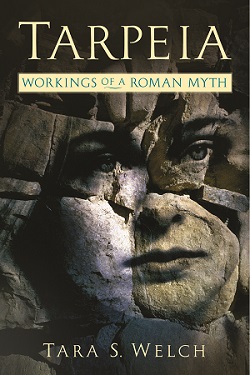TarpeiaWorkings of a Roman MythTara S. Welch |
 9/14/2015 Literary Criticism, Ancient and Classical 344 pp. 6x9  $68.95 cloth 978-0-8142-1281-3 Add cloth to shopping cart $32.95 paper 978-0-8142-5218-5 Add paper to shopping cart $29.95 PDF 978-0-8142-9386-7 Add PDF eBook to shopping cart Shopping Cart Instructions Review/Change Shopping Cart & Check-out | |||
|
“This is a terrifically impressive book. Welch draws together a wide array of material relevant to Tarpeia—poetry and prose, coins and monuments, from the third century BCE to the second century CE.” —Ellen Oliensis, University of California, Berkeley According to legends of Rome’s foundation, Tarpeia was a maiden who betrayed Romulus’ city to the invading Sabines. She was then crushed to death by the Sabines’ shields and her body hurled from the Tarpeian Rock, which became the place from which subsequent traitors of the city were thrown. In this volume, Tara S. Welch explores the uses and contours of Tarpeia’s myth through several centuries of Roman history and across several types of ancient sources, including Latin and Greek texts in various genres. Welch demonstrates how ancient thinkers used Tarpeia’s myth to highlight matters of ethics, gender, ethnicity, political authority, language, conquest, and tradition. This cluster of themes reveals that Tarpeia’s myth is not primarily about what it means to be human, but rather what it means to be Roman. Thus Tarpeia’s story spans centuries, distances, genres, and modes of communication—Rome itself did. No Greek city-state could admit such continuity, and Greece was never so constant. In this way, though Tarpeia has a dozen Greek cousins whose stories are similar to hers, hers is a powerfully Roman myth, even for the Greeks who told her tale. She is token, totem, and symbol of Rome. Tara S. Welch is Professor and Chair of Classics at the University of Kansas and is the author of The Elegiac Cityscape: Propertius and the Meaning of Roman Monuments (OSU Press). | ||||

